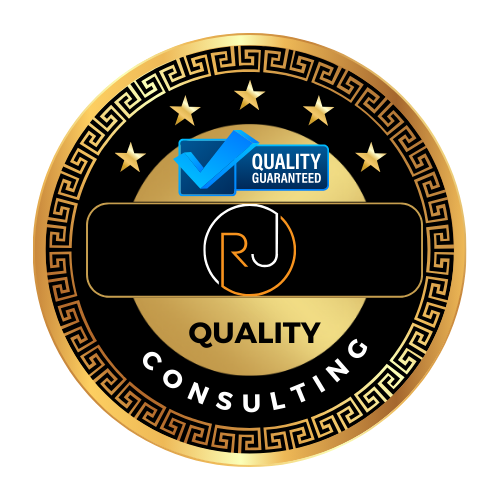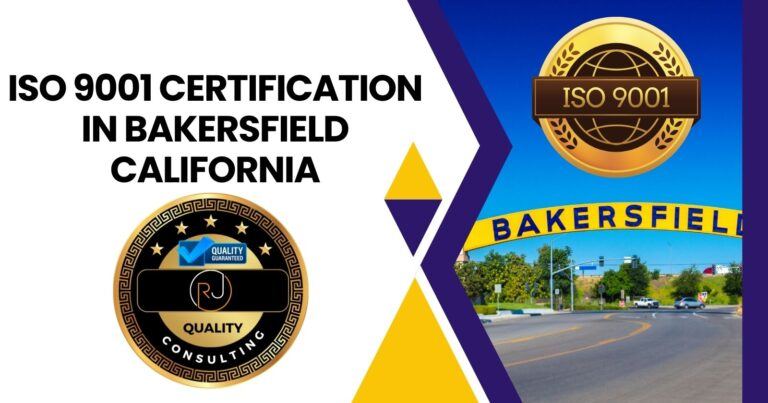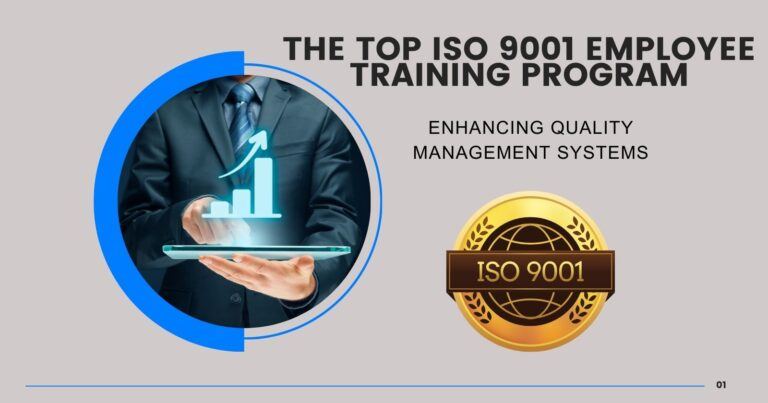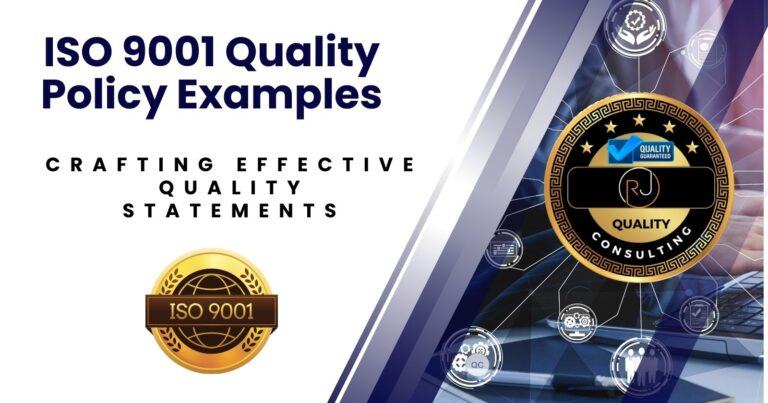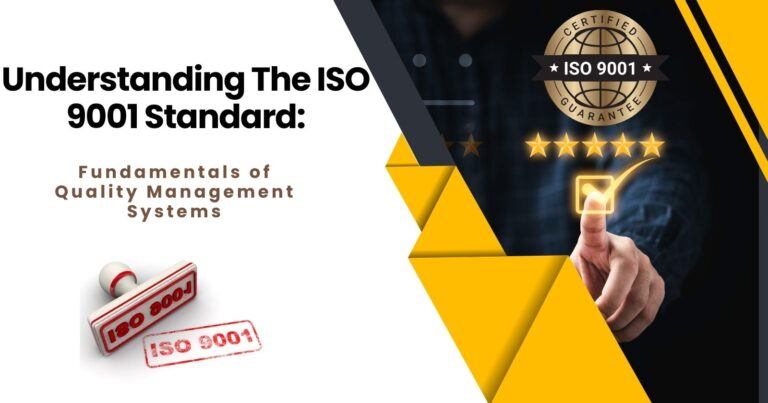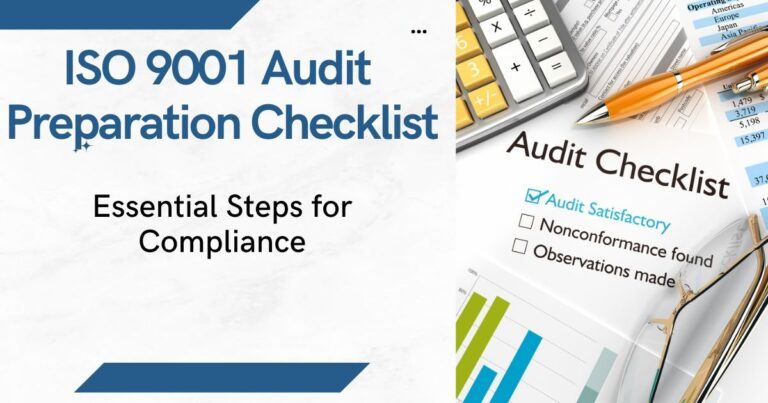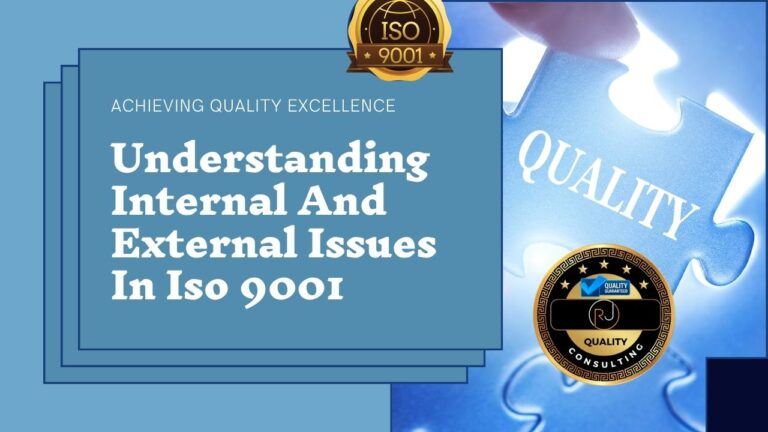What Is an ISO 9001 Quality Management System?
I’m going to kick things off by demystifying what the ISO 9001:2015 standard is all about and answering the initial question, what is an ISO 9001 quality management system? In its essence, it’s a universally recognized set of guidelines. It doesn’t matter if you’re a start-up or a multinational corporation, these standards are designed to streamline quality across the board. It also doesn’t matter if your company manufactures widgets or provides a service, or any other type of product. The ISO 9001 quality management system can help improve your overall business and your relationships with your customers.
So, what is An ISO 9001 Quality Management System?
Here is a brief definition:
ISO 9001 is defined as the international standard that specifies requirements for a quality management system (QMS). An ISO 9001 quality management system, is, therefore, an organizations management system that meets the requirements of the ISO 9001 international standard.
📘 ISO/IEC 17025 Quality Manual Template
Accelerate your lab’s accreditation process with our comprehensive Quality Manual Template, designed to align with ISO/IEC 17025:2017 standards.
- Fully editable and customizable to fit your laboratory’s needs.
- Includes all necessary procedures, forms, and policies.
- Structured to facilitate easy implementation and compliance.
- Developed by experts with extensive ISO/IEC 17025 experience.
Check Out Our Great Selection of ISO 9001 Online Training Courses
Looking to master ISO 9001:2015 or ensure top-notch training for your team? Explore our Online Courses here!
 Now you may be wondering what a Quality Management System (QMS) actually does. In other words, what is the purpose of a quality management system? Think of it as your organization’s playbook for ensuring that your products or services aren’t just good, but consistently great. It’s about putting quality at the heart of everything you do, virtually guaranteeing you a spot on your customer’s good side.
Now you may be wondering what a Quality Management System (QMS) actually does. In other words, what is the purpose of a quality management system? Think of it as your organization’s playbook for ensuring that your products or services aren’t just good, but consistently great. It’s about putting quality at the heart of everything you do, virtually guaranteeing you a spot on your customer’s good side.
What’s particularly intriguing about ISO 9001:2015 is that it’s not just a static document. Instead, it’s alive with the potential to transform your organization’s processes and output. Even more fascinating is how it aligns with the eternal truth that change is constant. It’s designed to bend without breaking, adapt without losing form – evolving just as your business does.
Key Principles and Objectives of ISO 9001
If you’re looking to get the lowdown on ISO 9001, it’s critical to begin with its core principles and objectives. This isn’t just about ticking a box for compliance; it’s also about building a solid foundation for your organization’s processes and customer relations.
At its heart, ISO 9001 is designed to ramp up process efficiency. This means setting up systems that help cut down on waste, reduce errors, and streamline operations. By doing so, companies can work smarter, not harder, delivering on their promises faster and more consistently.
But ISO 9001 doesn’t stop at efficiency; it’s also heavily focused on improving an organization’s overall performance. This can encompass a range of factors, from the quality of products and services to the morale of the workforce. A well-implemented Quality Management System can be a catalyst for enhanced performance across all levels of an operation.
And let’s not forget the end goal here: customer satisfaction. Ensuring that customer needs are met—and exceeded—is a non-negotiable part of the ISO 9001 ethos. Through continuous improvement cycles, businesses are encouraged to keep their fingers on the pulse of customer expectations, refining products and services to align with what customers truly value.
With these principles in place, organizations find themselves on a steady path to not just maintaining quality, but elevating it, fostering trust and loyalty with their customers. And, in a competitive marketplace, that relationship is pure gold.
Understanding the ISO 9001: 2015 Revision and Its Impact
 In 2015, the ISO 9001 standard underwent significant revisions that were more than just window dressing. These changes were implemented to ensure that the standard remains relevant in our ever-evolving business landscape.
In 2015, the ISO 9001 standard underwent significant revisions that were more than just window dressing. These changes were implemented to ensure that the standard remains relevant in our ever-evolving business landscape.
One crucial update was the integration of risk management into the quality management process. This wasn’t just an afterthought; it became fundamental in identifying potential pitfalls and proactive planning to mitigate risks before they become issues.
Leadership involvement saw a surge in importance in the new revision. It’s about ensuring the top management isn’t just paying lip service to quality management but is actively participating and driving the QMS forward. This engagement reflects a culture that values quality throughout the organizational hierarchy.
Another pivotal shift was towards a process-oriented approach. This means that instead of just checking off requirements, the focus is now on being efficient and effective through well-defined processes, understanding how these processes interlink, and how they contribute to achieving the desired outcomes.
What caught many people’s attention is how the 2015 revision stresses the need for the QMS to be woven into the fabric of the strategic direction of the organization. It’s not standing in isolation; it’s there to propel the organizational mission.
To sum it up, the 2015 revision of ISO 9001 wasn’t just about tacking on a few extra requirements; it was a thorough update to make the standard a better tool for modern organizations in managing and improving quality.
Strategic Integration of QMS in Organizations

The ISO 9001:2015 standard doesn’t just hang its hat on the tactical aspects of quality management. On the contrary, it demands that an organization’s Quality Management System (QMS) weaves into the very fabric of its strategic direction. This connection ensures that when a company plots its course, quality isn’t just an afterthought but a fundamental pathway to reach its objectives.
A key aspect of strategic integration is maintaining a strong customer focus. This isn’t just about making sure products and services check off a list of quality standards. It’s about diving into the heart of customer needs and expectations, ensuring that what you deliver not only meets those requirements but strives to exceed them.
Another crucial element is satisfying not only the customer but also meeting regulatory requirements. You’re going to find out that this dual focus helps shield the organization against compliance risks and builds a stronger brand reputation. It’s a tightrope walk between adhering to industry norms and setting the bar high for customer satisfaction, but it’s a balance ISO 9001:2015 helps organizations achieve.
In my opinion, the philosophy embodied by ISO 9001:2015 reflects a reality of modern business: integrating quality into the strategic core is not merely about avoiding errors or defects; it’s about creating an environment where excellence is the norm rather than the exception. And in today’s fast-paced business world, this mindset is not a luxury; it’s a necessity for sustainability and growth.
Operationalizing QMS Through Detailed Policies and Processes

You can think of a Quality Management System (QMS) as your organization’s playbook for quality. It’s not just about having a good idea or intention for quality; it’s about turning those ideas into concrete actions. ISO 9001:2015 nudges organizations to draw up detailed policies that form a core part of this playbook.
Imagine your organization as a complex machine. Every part – be it a policy or a process – needs to work seamlessly together to produce a predictable, high-quality result. This is where ISO 9001 proves invaluable. It provides a framework for developing procedures that detail how your organization conducts its business and ensures the quality of your products and services.
Each policy and process drafted under the QMS should tie back to your organizational goals, customer satisfaction, and compliance with regulatory requirements. Think of it like this: your policies serve as a ‘quality promise’ to your customers, and your processes are the steps you take to keep that promise.
Now, it’s important to understand that effective business operation and quality management aren’t just happy byproducts of a QMS; they are its lifeblood. Having these detailed, well-thought-out policies and processes means minimising the opportunity for errors, enhancing operational efficiency, and providing a clear roadmap for continuous improvement.
I’m not going to just leave you with the concept; let’s bring this to life with an example. Suppose you’re in the manufacturing industry. You’ll have policies that dictate your approach to product development, manufacturing, and inspection. Then, processes come along to define how exactly these activities are carried out, often with checklists and flow charts that leave no stone unturned.
The Significance of Achieving ISO 9001 Certification
 Achieving ISO 9001 certification is more than just ticking a box for business compliance; it’s a declaration of an organization’s dedication to uphold the highest standards of quality and efficiency. It tells clients and partners that you’re serious about delivering consistent excellence.
Achieving ISO 9001 certification is more than just ticking a box for business compliance; it’s a declaration of an organization’s dedication to uphold the highest standards of quality and efficiency. It tells clients and partners that you’re serious about delivering consistent excellence.
The process of getting certified requires a rigorous evaluation of your quality management system, but don’t worry too much about the complexity. The goal here is improvement, and sometimes that means identifying areas where you can do better. Think of it as a valuable learning experience that provides a roadmap to drive your company’s progress forward.
Once you get that certification, it shouldn’t be the end of the journey. ISO 9001 is built on the foundation of continuous improvement. This means your first successful audit isn’t a final destination, but the beginning of an evolving process. You can always adjust your approach down the road, making incremental changes that can lead to significant benefits over time.
In a world where expectations are high, and competition is fierce, ISO 9001 certification can make all the difference. It shows you’re willing to go the extra mile for quality, ensuring that your customers remain happy and loyal. So, if you want to stand out and keep improving, ISO 9001 could be the blueprint for success you’ve been looking for.
I really hope that you now have a clearer understanding of what an ISO 9001 Quality Management System is all about. It’s not just a set of rules to follow; it’s a culture, a mindset geared towards excellence. And whether you’re just starting or looking to refine your current system, remember, it’s all about making quality management an integral part of your daily operations and long-term strategy.
🕒 Book Your Free 45-Minute Consultation
Have questions about ISO/IEC 17025 or ISO 9001 implementation or accreditation? Schedule a free 45-minute consultation with me to discuss your Company or laboratory’s needs and how we can achieve compliance together.
Schedule Your Consultation